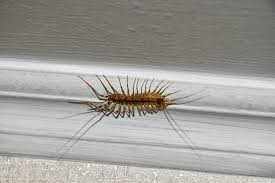
Did you know that over 500 kinds of bugs may be living in your home? Arthropods—insects, spiders, and their relatives—have been living and evolving alongside people for millennia.
A 2015 study of 50 homes around Raleigh, NC, conducted by NC State University, found that each home housed between 32 and 211 arthropod species. Out of more than 550 rooms sampled, only five were totally bugless.
There’s no reason to be afraid of your miniature house guests. Most of them are harmless. The fear factor derives from misinformation from bug spray manufacturers and such. While there are insects that spread diseases, many of the arthropods work diligently to clean your home and protect your family from their pesky cousins. The survey found typical household pests, such as cockroaches, termites, and fleas, were only present in a few homes, while the spiders found in every home were very benign and ate pests.
Identifying the wildlife residing inside your abode is a relatively new field of study. Robb Dunn, a professor at NC State University, says, “Most of the living world remains poorly or totally unknown. In my lab, we study the species around us in our everyday lives... Most of those species are not well known, so there are many things to discover in your backyard, in your bedroom, or even on your roommate.”
Since 2018, Dunn and his colleagues have encouraged people to catalog all the invertebrates living among us through a citizen science project called Never Home Alone: The Wild Life of Homes on iNaturalist. The project aims to collect worldwide observations of organisms seen indoors.
The results so far are fascinating. Our shower drains, closet floors, windowsills, damp basements, carpets, and even bookshelves host a higher arthropod diversity than some natural ecosystems!
Preliminary findings are primarily from the US (47%), but volunteers from 146 other countries have also participated. As of December 2023, approximately 63% of observations included butterflies/moths, beetles, flies, bees/ants, and true bugs. The remaining indoor populations comprised arachnids, other arthropods, and vertebrates.
The most observed organisms identified were Long-Bodied Cellar Spiders, Asian Lady Beetles, Bathroom Moth Flies, Brown Marmorated Stink Bugs, and House Centipedes.
The research continues, and if you want to participate, sign up for Never Home Alone: The Wild Life of Homes on iNaturalist.
Think about it as something to do over these long, dull winter days. Take your kids on an indoor safari and look for bugs. You’ll be surprised at what you’ll find. In the meantime, you and the kids will learn to identify and respect the other lives we share in our home. Another bonus is that you all can learn about habitats and biodiversity without leaving home.
The best part is not having to buy special equipment. You only need a paintbrush to gently maneuver your specimen onto a sheet of white paper, a magnifying glass, and a camera or smartphone. When the task is completed, gently place the creature back where it came from.
You’ll be surprised at all you’ll find:
- Dunn commented that the average light fixture has something like 15 species inside it.
- A bookshelf can be home to book lice. They like to eat starches, like those found in old book bindings. You’ll also find the tiny arachnids who prey on the book lice.
- Spiders are everywhere. Please, don’t squish them. They are good guys, and some species can live more than a decade.
- Roly-polies, or pillbugs, prefer damper areas like the basement or garage.
- Bees, wasps, flies, and moths favor windowsills, while beetles roam around in the carpets.
- Of course, you can’t forget the kitchen. Ants and many other bugs hang out looking for handouts.
Go ahead and crawl around the floor, look under the furniture, check behind the doors, look in the corners. Meet, greet, and welcome your house guests. They’ll keep you company on the long, cold nights of winter.
 RSS Feed
RSS Feed

